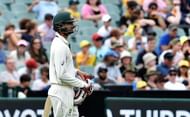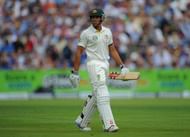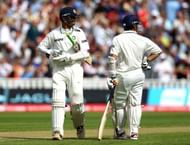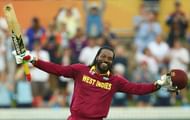The Umpire Decision Review System in cricket was put in place by the International Cricket Council to reduce the blunders made by on-field umpires. India and Sri Lanka were the first teams to play in a match with the DRS in place.
Ever since its inception, the system has drawn praises and criticism in equal measure. India is the only country which is still not convinced with the system and have been sceptical about using it after their miserable results in the first attempt against Sri Lanka, in 2008.
Although over the years there have been many modifications made to the technology, which includes ball-tracking and the hotspot, there are still a few redundant flaws that have prevented the system from being foolproof.
The DRS has also had its own share of controversies, as some decisions have changed the course of the match. Here, in this list, we take a look at 5 of the biggest controversial decisions that have had a significant impact on the eventual outcome of the game.
#1 Sachin Tendulkar vs Pakistan in Mohali 2011
India vs Pakistan is considered by many as the mother of all clashes in cricket. The stakes are further increased when the two neighbours clash in any ICC event, and over the years India has managed to outsmart Pakistan on 8 occasions in World events.
Hence, when India met Pakistan in Mohali during the semi-finals of the 2011 World Cup, the stage was set for another humdinger. Virender Sehwag got the things rolling as he smacked Umar Gul for 5 consecutive boundaries.
But it was the day when Sachin Tendulkar rode his luck and scrapped his way to a streaky knock of 85 runs. Sachin got reprieves on as many as 6 occasions during the entire innings. However, the most controversial one came when he was on 23 and was facing Saeed Ajmal, the Pakistan off-spinner. Ajmal bowled a flat delivery which pitched and turned in to beat Sachin's attempted flick on the leg side. He was hit on the pads and was adjudged LBW by umpire Ian Gould. After discussing with Gautam Gambhir, Tendulkar asked for the review.
The ball tracking technique showed that the ball would have missed the leg stump, and thus India got a massive reprieve. Sachin went on to score 85 runs, even as Ian Gould was visibly upset with the reversal, and India eventually won the match by 29 runs.
#2 Nathan Lyon vs New Zealand in Adelaide 2015
New Zealand were on their tour to Australia in 2015 and were trailing in the series by 1-0 in the three-match series.
In the third match, Australia were struggling at 117/8 in their first innings when Nathan Lyon looked to sweep. The ball beat his bat, and then he was hit on the shoulder through to first slip. New Zealand appealed for the catch and the decision was referred to Nigel Llong, the third umpire. Llong saw the replays for a long time and there was an evident mark on the back of Lyon's bat. Even Nathan Lyon started walking off, but then Snickometer was used and there was no indication of any noise.
Lyon was eventually declared not out, and the hosts drove home the advantage, and took the series 2-0, much to the elation of the Adelaide crowd. A howler indeed, but not by the on-field umpire, but by the third umpire.
#3 Usman Khawaja v England in Manchester 2013
This decision can be dubbed as one of the biggest and obvious howlers made by the third umpire while reviewing the on-field call.
Usman Khawaja was the unfortunate batsman to be given out, even as there was clear daylight between the ball and the bat. Khawaja pushed at a straighter one from Graeme Swann but completely missed the ball. On field umpire Tony Hill declared Khawaja out, and the decision was reviewed, but third umpire Kumar Dharamsena for some reason decided not to overturn the decision.
The match ended in a draw and England went on to retain the Ashes, even as Australia dominated the entire duration of the Test match.
#4 Rahul Dravid vs England Birmingham, 2011
This was the third match of India's forgetful tour to England. Rahul Dravid was the only batsman who was amongst the runs. He was facing James Anderson in the second innings, and Anderson was making the ball hoop around.
One such ball was an absolute peach, as it shaped in and the seamed away to beat Dravid's prod. Matt Prior took the catch and umpire Simon Taufel gave it out. Dravid decided not to review the call, and walked away. However, when the replays came up, it showed that the bat had clipped the shoelaces, and was nowhere near the ball. This was the reason behind the noise, and only if Dravid had reviewed, he would have remained at the wicket, and India could have saved the Test.
A case of DRS not being used at the critical time.
#5 Chris Gayle vs Zimbabwe in Canberra 2015
It was a record-breaking knock played by Chris Gayle against Zimbabwe in the 2015 World Cup in Canberra. But the Jamaican marauder would have dismissed off the very first ball, had it not been for the DRS.
West Indies had already lost their first wicket with just 1 run on the board when Gayle was hit on the pad off his very first ball. The on-field umpire Steve Davis did not give him out, and Zimbabwe reviewed. When the ball tracking system was used, the ball was shown to hit Gayle below the knee roll and everyone including the commentators were convinced that the ball would hit the stumps. But then, somehow, the ball was shown to miss the stumps, and the original decision was upheld.
It was a massive reprieve, and Gayle went on to plunder 215 runs, and West Indies amassed 372 for 2 which also became their highest ODI total.
Brand-new app in a brand-new avatar! Download CricRocket for fast cricket scores, rocket flicks, super notifications and much more! 🚀☄️




